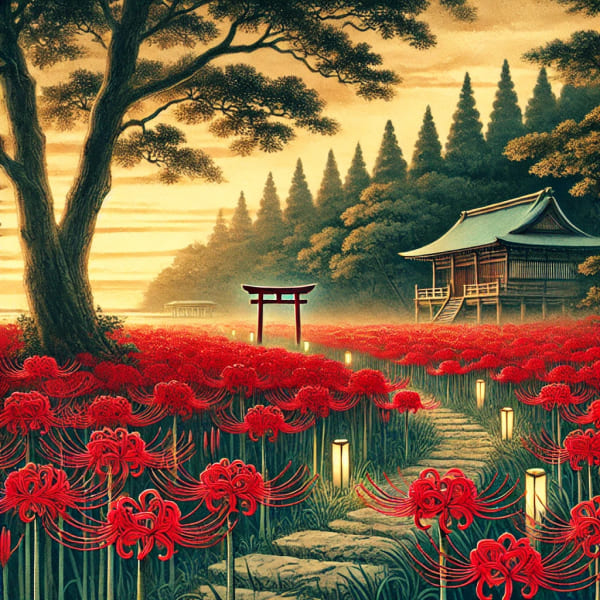Autumnal Equinox Day in Japan: Honoring Nature, Ancestors, and the Changing Seasons

Contents
As the days grow shorter and a gentle coolness returns, Japan pauses to honor a moment of balance—Autumnal Equinox Day.
Celebrated around September 23rd, this national holiday marks the turning point between summer and autumn. It is also one of the 24 solar terms (sekki) in the traditional East Asian calendar, representing an important moment in both the agricultural cycle and spiritual observance. The day encourages people to reflect on the cycle of life, honor their ancestors, and embrace the shifting seasons. Rooted in both Buddhist traditions and seasonal awareness, Autumnal Equinox Day beautifully blends spirituality and family values in a uniquely Japanese way.
The History and Origin of Autumnal Equinox Day
Autumnal Equinox Day (Shūbun no Hi) is rooted in both astronomical significance and cultural traditions in Japan. The equinox marks the moment when day and night are nearly equal in length, and it serves as a symbolic point of seasonal change.
The holiday as it is celebrated today reflects two major influences:
Buddhist Traditions
One of the most familiar aspects of Autumnal Equinox Day for many Japanese families comes from Buddhist practices. Closely tied to Ohigan, a Buddhist custom observed during the spring and autumn equinoxes. During this period, families visit ancestral graves, offer flowers and incense, and reflect on the impermanence of life. It is a time for honoring the dead and strengthening the bond between past and present generations.
Imperial Rituals (Pre-1948)
Before becoming a secular national holiday, Autumnal Equinox Day was part of the official religious calendar of the Japanese imperial state.
Known as Shūki Kōreisai (秋季皇霊祭) before World War II, it was a national holiday established in 1878 to commemorate the spirits of past emperors and imperial family members. In 1948, it was renamed Autumnal Equinox Day as part of postwar reforms that promoted the separation of religion and state, shifting the focus to values of remembrance and seasonal reflection.
By combining these two legacies, the modern holiday embraces both spiritual meaning and appreciation for nature, offering a quiet moment of connection in the rhythm of Japanese life.
A Quiet Holiday of Reflection
Unlike festivals filled with decorations and lively events, Autumnal Equinox Day is observed in a calm, introspective spirit. Most people do not celebrate it with public gatherings or elaborate rituals. Instead, the day is seen as an opportunity to take a break from daily life and reconnect—with family, nature, and personal thoughts.
While many families observe Ohigan by visiting the graves of loved ones, others simply spend the day at home. For students and workers alike, the national holiday offers a welcome pause in the busy pace of early autumn.
There are no fireworks or major public events, but the value of the day lies in the quiet space it creates—inviting people to slow down, reflect on life’s impermanence, and find harmony in the passing of time.
This understated approach reflects a uniquely Japanese view of balance—not through spectacle, but through stillness.
Silver Week: Japan’s Bonus Break in Autumn
While Autumnal Equinox Day is a meaningful day of reflection, in modern Japan, it can also be part of a unique cultural phenomenon known as Silver Week.
Silver Week refers to a rare stretch of consecutive public holidays that sometimes occurs in mid-to-late September, depending on how the calendar falls. When Respect for the Aged Day (the third Monday of September) and Autumnal Equinox Day align with a weekend or are separated by a single workday, many people take time off to create a mini vacation—much like the famous Golden Week in spring.
Although not guaranteed every year, when Silver Week happens, it becomes a chance for people to travel, visit family, or simply unwind after the busy summer months. Transportation hubs get crowded, sightseeing spots fill up, and accommodations are often booked well in advance.
This modern holiday culture highlights a uniquely Japanese appreciation for using national holidays to rest and reconnect. For students and workers alike, the possibility of a short break in early autumn is a source of excitement—turning even a spiritual day like Autumnal Equinox into something to look forward to in a very different way.
Conclusion: A Day of Balance and Gratitude
More than just a mark on the calendar, Autumnal Equinox Day in Japan invites a quiet pause.
It is a day that blends the old and the new: rooted in ancestral reverence and Buddhist tradition, yet evolving into a modern rhythm of rest and renewal. Whether observed through a visit to the family grave, the sharing of a sweet rice cake, or simply an afternoon spent in stillness, the essence of the day lies in balance—between light and dark, activity and rest, past and present.
For visitors and residents alike, it is not just a holiday to observe, but a feeling to experience—a fleeting but meaningful moment in the quiet unfolding of Japanese life.